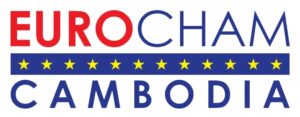Issue Description
The Royal Government of Cambodia (RGC) has pledged to the World Trade Organisation to implement trade facilitation agreements to improve the ease of trading in the country, including reducing the time and cost for traders or businesses to handle import and export procedures. A key issue for businesses is the time spent printing, signing, and processing paper-based documents for Customs clearance, often requiring them to visit multiple departments and offices and submit multiple copies of the same documents.
As a member of the National Committee on Trade Facilitation and the agency responsible for handling import/export procedures at the border, the General Department of Customs and Excise (GDCE) has promoted the modernisation of its infrastructure through its Customs Reform and Modernisation Strategy (2019-2023). As part of this strategy, the GDCE has also expanded the use of ASYCUDA, an electronic Customs clearance system developed by UNCTAD and adopted by the GDCE in 2015. ASYCUDA allows GDCE officials to upload and process export and import documents in digital format submitted by traders.
As of April 2023, ASYCUDA had been installed and implemented at 95 Customs and Excise offices, with 17 functions and modules that can process documents, such as automated Customs declarations or air and cargo manifests. The roll out of the software at Cambodia’s border crossings was intended to speed up the digitalisation of document submission and reduce document processing time for both traders and GDCE officials.
However, despite the adoption of ASYCUDA, the digitalisation of documentation procedures is currently incomplete. This is firstly due to the GDCE using another Customs clearance system in conjunction with ASYCUDA, called the Customs Valuation Declaration System (CVDS). Traders need to obtain a paper-based approval from the CVDS before submitting an electronic declaration on ASYCUDA. Secondly, the GDCE’s internal operational procedures have not been updated to reflect the de jure shift from paper to paperless documentation submission and processing.
Traders and other workers involved in moving goods across the border still report being asked to follow paper-based procedures. For example, Customs brokers – who handle Customs clearance processes on behalf of traders – state that they are still required to print, sign, and submit paper copies of the Single Administrative Document (SAD) to Customs. The SAD is a key document that was intended to be simplified and processed significantly faster through digital uploading and processing by ASYCUDA. Moreover, Customs officials are still required to vet the authenticity of the document in person – a process known as “consignee physical endorsement” – rather than relying on authentication software. Other examples include traders having to process documents through both ASYCUDA and CVDS, or having to pay warehouse fees separately from duties and taxes.
In conclusion, while the GDCE has made progress in implementing ASYCUDA and modernising its Customs infrastructure, there are still gaps in the digitalisation of document submission and processing.
Impact on business
Despite the GDCE embracing digitalisation of Customs clearance processes, the currently incomplete state of said digitalisation brings with it two significant risks.
Firstly, it can lead to delays and inefficiencies in Customs clearance, increasing the cost of doing business and reducing the country’s competitiveness in the global market. This can result in a decrease in trade and investment, hindering the country’s economic development.
Secondly, incomplete digitalisation can limit the potential for revenue collection, as manual procedures are less efficient in detecting undervaluation, misclassification, and other Customs violations from users.
Recommendation
- Deepen the digitalisation of Customs procedures
We therefore respectfully recommend that the GDCE deepen the digitalisation of Customs procedures, by streamlining the following requirements:
– Eliminating the requirement for “consignee physical endorsement” of paperwork for all shipments before declaration; we recommend that the GDCE also adopt the use of electronic notifications to inform traders whether they need further clarification on the shipment or need to submit additional documentation;
– Ensuring consignee authorisation letters to be made online and to allow blanket approval;
– Streamlining and combining CVDS with ASYCUDA into the declaration process, without the need for double submission;
– Allowing ASYCUDA to be the primary Customs tool for processing, assessment and release, with no manual paperwork and approvals;
– Ensuring payment of warehouse fees is combined and linked with payment of duties and taxes online;
– Ensuring Customs warehouse releases of goods are linked to ASYCUDA without the need for manual paperwork.
Relatedly, the Royal Government of Cambodia can also consider accelerating the ratification of the UNESCAP Framework Agreement on Paperless Trading, to which it is signatory.
The adoption of digital procedures for Customs clearance in Cambodia is expected to bring several benefits to the economy. It can reduce the time and cost of Customs clearance, increase efficiency and transparency, and improve the country’s competitiveness in the global market. The digitalisation of Customs procedures can also help increase revenue collection, providing additional resources for government investment in public goods and services. Overall, the adoption of digital procedures for Customs clearance can contribute to the modernisation and development of the Cambodian economy.
Royal government of Cambodia
Initiative from Eurocham: The issue has been raised by the Transport & Logistics Committee within The White Book edition 2024 in the Recommendation No. 2.

On June 10th, 2024, the GDCE invited EuroCham to a workshop to provide feedback on the Draft Guideline for Managing Procedures related to Postal, Express Delivery, and Cross-Border E-Commerce.
Initiative from Eurocham: On the occasion of the Workshop on the Draft Guideline on Procedures for Managing Postal, Express Delivery and Cross-Border E-Commerce, EuroCham, represented by Mr. Bunthan Suy, Chairman of the Transports & Logistics Committee, emphasized the importance of integrating the Customs Valuation and Data System (CDVS) with ASYHUB.

On the 11th of June 2024, the GDCE issued the SOP guidelines for the management of Postal, Express Delivery and Cross-Border E-Commerce.
You can find the SOP via this LINK.
Initiative from Eurocham: EuroCham sent a letter to the GDCE following up on the points raised during the workshop. The letter emphasizes the importance of integrating ASYHUB data with CVDS for customs valuation and the need to outline a simplified Return to Origin (RTO) process in the Standard Operating Procedure (SOP).
You can find the letter HERE.

In response to this letter, the GDCE met with the committee on the 4th of July, 2024, to discuss the technical issues faced by the operators. The GDCE confirmed that the CVDS is now integrated into ASYCUDA and is working on its inclusion into the ASYHUB System.
Initiative from Eurocham: During the 1st Europe-Cambodia Public-Private Sector Dialogue on September 17, 2024, concerns regarding the high logistics costs in Cambodia and the challenges of cross-border trade were highlighted. These excessive and complicated processes are significantly obstructing SMEs’ ability to grow and thrive, as their capacity to engage in import and export activities is hindered by bureaucratic obstacles at borders.

In response, H.E. Sun Chanthol asked EuroCham to identify the core issues that contribute to these cumbersome processes and costs. The aim was to address these fundamental issues with the relevant authorities and to provide updates at the next Europe-Cambodia Public-Private Sector Dialogue.
At a courtesy meeting between EuroCham and Prime Minister Hun Manet on September 19, 2024, Mr. Tassilo Brinzer, Chairman of EuroCham Cambodia, brought up the subject of high logistics costs and the associated challenges.

Prime Minister Hun Manet recognized the difficulties stemming from these cumbersome processes and encouraged EuroCham Cambodia to compile their recommendations and collaborate with Neak Oknha Rithy Sear, a government advisor.
Following the meeting with the Prime Minister and the 1st Europe-Cambodia Public-Private Sector Dialogue, EuroCham and its Transports & Logistics Committee sent a letter to the relevant ministries requesting high-level intervention. You can access the letter here.

The General Department of Customs and Excise (GDCE) invited EuroCham for a meeting to discuss challenges and solutions for Cambodia’s logistics sectors and customs processes on the 19th of November 2024.
During the meeting, the GDCE committed to further streamline customs procedures by integrating the CVDS and ASYCUDA systems. This integration will enable the Single Submission of SAD, Customs Valuation, HS Code, and Certificate of Origin verification within the ASYCUDA system, a key initiative outlined in the GDCE’s 2025 Action Plan.

The Council for the Development of Cambodia (CDC) has invited EuroCham to present at the 7th session of the National Logistics Council on the 16th December 2024, to address the challenges faced by businesses in Cambodia regarding Transport and Logistics.
EuroCham Cambodia participated in the 7th session of the National Logistics Council to highlight the challenges faced by businesses operating in Cambodia. EuroCham representatives stressed the importance of improving the country’s logistics infrastructure and simplifying processes to make Cambodia a more competitive and appealing destination for businesses. EuroCham stressed the lengthy manual transfer process from ASYHUB to the CVDS.
You can find the presentation HERE.

Customs has streamlined the SAD submission process by removing 5 supporting documents in February 2025 and approving the removal of 4 more on March 7, 2025 (implementation pending). Further simplification includes revised Power of Attorney (POA) requirements. The PDF Invoice requirement will be eliminated once operators directly interface shipment data with Customs systems.”
At the occasion of the Cambodia-Europe Public-Private Sector Dialogue on April 7, 2025, co-chaired by EuroCham and the Council for the Development of Cambodia (CDC), committee chairman Mr. Bunthan Suy provided an update to the Royal Government of Cambodia on the digitisation of customs clearance from the past six months. The main updates were as follows:
- Five pieces of paperwork were removed in February, and by June 1, customs will remove four more pieces of paperwork and has issued a simplified Power of Attorney.
- One of EuroCham’s member’s IT teams (DHL Express) and the GDCE IT team are working on a system-to-system interface for their platforms, which is scheduled to go live by July 2025.
- In a new development, DHL Express Cambodia and GDCE officially signed a Memorandum of Understanding on March 27, 2025. The MoU formalises collaboration in trade facilitation, customs compliance, digital integration, and capacity building.

A GDCE representative confirmed that the transshipment regulation will incorporate private sector feedback. He acknowledged receiving recommendations and will forward them to the GDCE. H.E. DPM Sun Chanthol emphasised the government’s urgent need to act to retain all investors in Cambodia.
National Counterparts

General Department of Customs and Excise
Contributors

Mr. Suy Bunthan
Chairman

Mr. Seng Vichet
Vice-Chairman

Mr. Matthew Owen
Vice-Chairman

